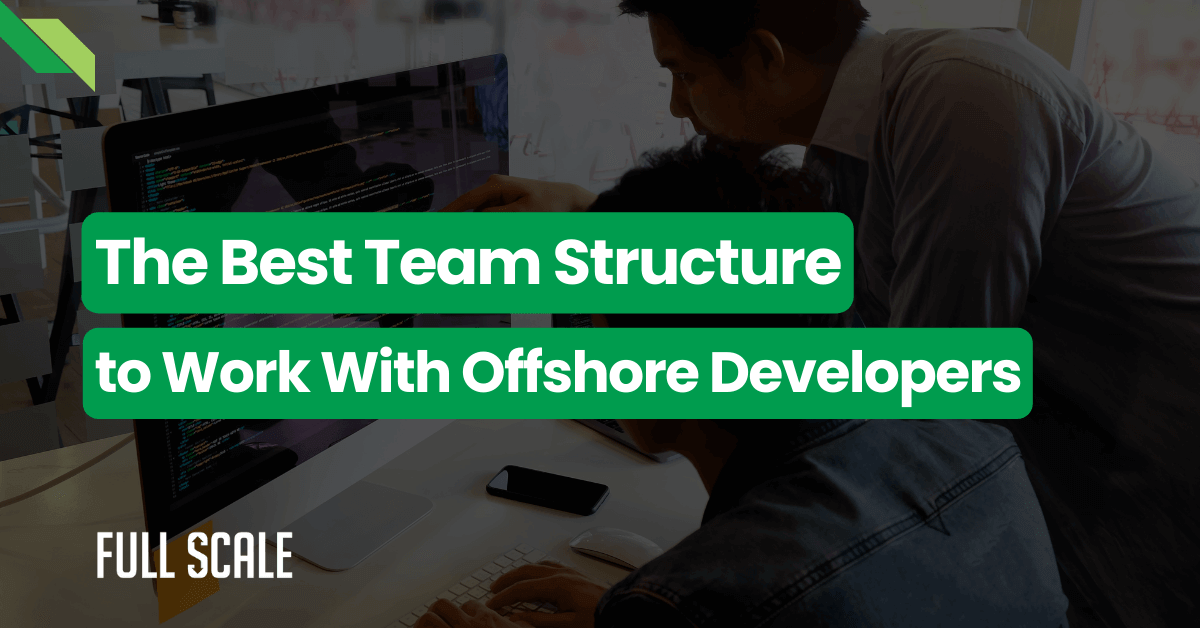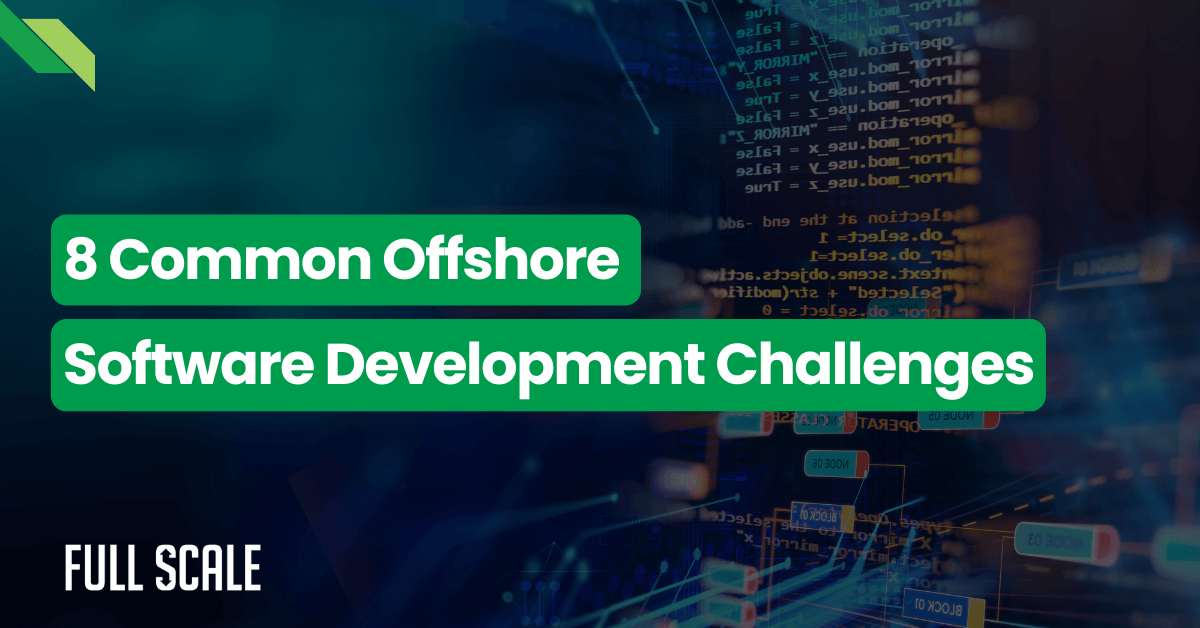Last Updated on 2025-04-20
Engineers and technical leaders face increasingly complex deployment challenges. Infrastructure as Code offers a strategic solution to these problems. This comprehensive guide explores IaC implementation, from basic concepts to advanced strategies.
Infrastructure as Code (IaC) transforms infrastructure management through machine-readable definition files. This approach eliminates manual processes and human error. IaC enables organizations to deploy consistent environments with speed and reliability.
Recent statistics demonstrate the transformative impact of IaC:
- 90% faster deployment times across organizations implementing IaC (Forrester Research, 2024)
- 30% reduction in operational costs through automation and standardization (DevOps Institute, 2023)
- 75% fewer security incidents related to misconfiguration (Gartner Infrastructure Report, 2024)
These benefits directly address the scaling challenges faced by engineering teams. CTOs and VPs of Engineering can leverage IaC to maintain quality while accelerating delivery.
The Business Case for Infrastructure as Code
IaC delivers measurable benefits across multiple business metrics. Understanding these advantages helps justify implementation costs. Technical leaders can present compelling ROI arguments to finance stakeholders.
Quantifiable Benefits of IaC Implementation
| Benefit | Traditional Infrastructure | With IaC | Improvement |
| Deployment Time | 2-5 days | 15-30 minutes | 95% reduction |
| Configuration Errors | 15-20 per month | 1-2 per month | 90% reduction |
| Resource Utilization | 40-50% | 70-80% | 30% increase |
| Compliance Verification | 1-2 weeks | 1-2 hours | 98% reduction |
These metrics demonstrate the transformative impact of IaC on operational efficiency. A mid-size FinTech company reduced infrastructure costs by 35% within six months of implementation. Their engineering team reallocated 20 hours per week from maintenance to innovation.
Key business advantages include:
- Accelerated time-to-market for new products and features
- Reduced operational overhead through standardization
- Improved security posture via consistent configurations
- Enhanced budget predictability with defined resource specifications
IaC scales proportionally with business growth without requiring additional staff. This capability proves particularly valuable for rapidly growing startups and mid-size companies. Teams can duplicate environments for testing, staging, and production with minimal effort.
Core IaC Principles for Technical Leaders
Understanding fundamental IaC principles helps technical leaders make informed decisions. These concepts form the foundation for successful implementation. They guide tool selection and implementation strategy.
Declarative vs. Imperative Approaches
Declarative IaC defines the desired end state without specifying steps. This approach offers greater flexibility and reduced complexity. Terraform and CloudFormation exemplify this methodology.
Imperative approaches define specific commands to execute in sequence. These methods provide more control but require careful ordering. They typically demand more maintenance and introduce complexity at scale.
Essential principles for implementation success:
- Idempotency ensures consistent results regardless of execution frequency
- Version control integration creates detailed audit trails for compliance
- Resource modularity enables reuse and standardization
- Infrastructure immutability prevents configuration drift
Immutability treats infrastructure components as replaceable rather than modifiable. This approach enhances security and consistency. New deployments create entirely new instances rather than modifying existing ones.
Choosing the Right IaC Tools for Your Stack
Selecting appropriate IaC tools depends on your existing technology stack. These tools offer varying capabilities and integration options. The right choice aligns with your team’s skills and infrastructure requirements.
Comparison of Major IaC Platforms
| Feature | Terraform | AWS CloudFormation | Azure Resource Manager | Ansible |
| Cloud Support | Multi-cloud | AWS only | Azure only | Multi-cloud |
| Language | HCL | JSON/YAML | JSON/YAML | YAML |
| Learning Curve | Moderate | Moderate | Moderate | Low |
| State Management | External state file | Managed by AWS | Managed by Azure | Stateless |
| Modularity | Strong | Moderate | Moderate | Strong |
| Community Support | Extensive | Good | Good | Extensive |
| Enterprise Features | Commercial offering | Included | Included | Commercial offering |
This comparison highlights the strengths of leading IaC platforms. Organizations using multiple cloud providers benefit from Terraform’s flexibility. Single-cloud environments might prefer native tools like CloudFormation or ARM templates.
Key selection factors to consider:
- Existing cloud infrastructure and provider relationships
- Team expertise and learning capacity
- Multi-cloud requirements for current and future needs
- Integration capabilities with CI/CD pipelines
Domain-specific languages impact adoption speed and team productivity. Terraform’s HCL balances readability with powerful expression capabilities. YAML-based tools offer simplicity but sometimes sacrifice functionality.
Getting Started: Your First IaC Implementation
Beginning your IaC journey requires preparation and planning. This section outlines the initial implementation steps. Following these guidelines ensures a smooth transition from manual processes.
Setting Up the Development Environment
Start by installing the chosen IaC tool on developer workstations. Configure provider authentication for your cloud platforms. Create a centralized repository for storing definitions of infrastructure.
# Install Terraform on MacOS
brew install terraform
# Install AWS CLI for authentication
brew install awscli
# Configure cloud provider credentials
aws configure
These commands prepare a local environment for Terraform development. Similar setup processes exist for other IaC tools. Standardize this environment across your development team.
Creating Basic Infrastructure Definitions
Begin with simple, isolated resources before tackling complex configurations. This approach builds confidence and identifies issues early. Network components provide an excellent starting point.
# Basic VPC definition in Terraform
provider "aws" {
region = "us-west-2"
}
resource "aws_vpc" "main" {
cidr_block = "10.0.0.0/16"
tags = {
Name = "Main-VPC"
Environment = "Production"
}
}
resource "aws_subnet" "public" {
vpc_id = aws_vpc.main.id
cidr_block = "10.0.1.0/24"
tags = {
Name = "Public-Subnet"
}
}
This example creates a VPC and subnet in AWS. The configuration demonstrates Terraform’s declarative syntax. The resource relationships show implicit dependency management.
First-time implementation priorities:
- Start small with non-critical infrastructure components
- Document everything, including decisions and configurations
- Establish validation procedures before executing changes
- Create rollback procedures for unexpected issues
Execute deployment commands and observe the provisioning process. Validate created resources through cloud provider consoles. Document any unexpected behaviors or errors.
Advanced IaC Patterns and Practices
After mastering basics, explore advanced patterns for complex environments. These techniques enhance scalability and maintainability. They represent industry best practices for enterprise deployments.
Modularization Strategies
Organize infrastructure code into reusable modules with clear interfaces. This approach promotes standardization across teams. It reduces duplication and simplifies updates.
# Module definition for a standardized web server
module "web_server" {
source = "./modules/web_server"
instance_type = "t3.medium"
vpc_id = aws_vpc.main.id
subnet_ids = aws_subnet.public[*].id
tags = {
Environment = "Production"
Service = "Web"
}
}
This example demonstrates module usage in Terraform. The module encapsulates web server configuration details. Teams can reuse this pattern with different parameters across environments.
State Management for Distributed Teams
Implement remote state storage to enable collaboration. Configure fine-grained access controls for the infrastructure state. Establish locking mechanisms to prevent concurrent modifications.
# Remote state configuration for team collaboration
terraform {
backend "s3" {
bucket = "company-terraform-states"
key = "production/network/terraform.tfstate"
region = "us-east-1"
dynamodb_table = "terraform-locks"
encrypt = true
}
}
This configuration stores Terraform state in an S3 bucket. The DynamoDB table provides state-locking functionality. These measures prevent conflicts in distributed teams.
Advanced practice implementation priorities:
- Secrets management integration for credential security
- Dependency management between infrastructure components
- Dynamic configuration for environment-specific variables
- Testing frameworks for infrastructure validation
These practices become increasingly important as infrastructure complexity grows. They support maintainability and reliability at scale.
Integrating IaC into Your CI/CD Pipeline
IaC thrives when integrated with continuous integration workflows. This section covers automated testing and deployment strategies. These practices enhance reliability and deployment frequency.
Automated Testing for Infrastructure Code
Implement syntax validation, security scanning, and policy compliance checks. These tests verify infrastructure code quality. They prevent problematic configurations from reaching production.
# GitHub Actions workflow for Terraform validation
name: Terraform Validation
on:
pull_request:
paths:
- 'terraform/**'
jobs:
validate:
runs-on: ubuntu-latest
steps:
- uses: actions/checkout@v2
- name: Setup Terraform
uses: hashicorp/setup-terraform@v1
- name: Terraform Format Check
run: terraform fmt -check
- name: Terraform Init
run: terraform init
- name: Terraform Validate
run: terraform validate
This workflow validates Terraform configurations on pull requests. It ensures code quality before merging changes. Similar pipelines can implement security scans with tools like tfsec.
CI/CD integration benefits:
- Automated validation catches errors before deployment
- Consistent processes reduce human error
- Approval workflows maintain governance requirements
- Deployment automation increases reliability and frequency
Blue/green deployment strategies work effectively with immutable infrastructure. Teams provision new environments before decommissioning old ones. This approach eliminates downtime during transitions.
Security and Compliance in IaC
Security integration must occur throughout the IaC lifecycle. This section covers best practices for secure infrastructure. These measures protect systems while maintaining compliance.
Infrastructure Security Scanning
Implement automated scanning in development and deployment pipelines. These tools identify insecure configurations before provisioning. They provide immediate feedback to developers.
# Scanning Terraform with tfsec in CI pipeline
- name: Security Scan
run: |
curl -L https://github.com/tfsec/tfsec/releases/download/v0.63.1/tfsec-linux-amd64 -o tfsec
chmod +x tfsec
./tfsec ./terraform
This CI step scans Terraform configurations for security issues. It identifies exposed credentials, insecure defaults, and vulnerable configurations. Similar tools exist for other IaC platforms.
Security and compliance priorities:
- Policy as code implementation with tools like OPA
- Least privilege principle in all resource definitions
- Comprehensive audit trails for all infrastructure changes
- Automated compliance verification against industry standards
These practices shift security left in the development process. They prevent vulnerabilities rather than identifying them after deployment.
Scaling IaC Across Engineering Teams
Organizational adoption requires coordination and governance. This section addresses team structures and training. These considerations support successful scaling.
Team Structure Recommendations
Consider centralized, distributed, or hybrid responsibility models. Each approach offers different advantages for IaC governance. The right structure depends on organizational size and culture.
| Team Structure | Advantages | Disadvantages | Best For |
| Centralized | Consistent standards | Potential bottleneck | Smaller organizations |
| Distributed | Fast iteration | Inconsistency risk | Independent teams |
| Platform Team | Specialized expertise | Communication overhead | Enterprise organizations |
| Hybrid | Balanced approach | Requires clear boundaries | Most organizations |
This table compares different organizational models for IaC management. The hybrid approach typically works best for growing organizations. It combines centralized governance with team autonomy.
Scaling success factors:
- Clear governance models with documented responsibilities
- Knowledge sharing protocols for best practices distribution
- Training programs for consistent skill development
- Support structures for implementation assistance
These elements support sustainable organizational adoption. They enable teams to implement infrastructure code effectively.
Measuring IaC Success: KPIs for Engineering Leaders
Metrics validate IaC investments and guide improvements. This section defines valuable measurements. These indicators help demonstrate ROI to stakeholders.
Key Performance Indicators for IaC
Monitor deployment frequency, change success rates, and recovery times. These metrics reflect DevOps maturity and IaC effectiveness. They correlate with overall team performance.
| KPI | Description | Target Improvement | Measurement Method |
| Deployment Frequency | Number of deployments per time period | 200% increase | CI/CD pipeline metrics |
| Change Failure Rate | Percentage of changes causing incidents | 50% reduction | Incident tracking system |
| Mean Time to Recovery | Average time to restore service | 75% reduction | Incident resolution metrics |
| Infrastructure Cost | Total cloud resource expenses | 30% reduction | Cloud provider billing |
| Provisioning Time | Time from request to available infrastructure | 90% reduction | Request tracking system |
These metrics provide quantifiable evidence of IaC benefits. Technical leaders should establish baselines before implementation. Regular reporting demonstrates continuous improvement.
Critical metrics to track:
- Deployment velocity metrics for team productivity
- Error rates for configuration quality assessment
- Cost optimization metrics for financial benefits
- Team efficiency measures for resource allocation
Tracking these metrics provides visibility into implementation success. They support continuous improvement initiatives.
Real-World Case Study: HealthTech Company’s IaC Journey
A leading HealthTech company transformed their infrastructure practices through IaC. Their experience offers valuable lessons. Their results demonstrate achievable outcomes.
Initial Challenges
The company struggled with inconsistent environments and slow deployments. Their manual processes required extensive documentation. Compliance requirements demanded extensive auditing.
Configuration drift between development and production caused frequent issues. Deployment windows expanded to accommodate manual verification. The team spent 65% of their time on maintenance rather than innovation.
Implementation Process
The company began with a small pilot team focusing on non-critical infrastructure. They selected Terraform for multi-cloud compatibility. Training focused on practical exercises rather than theory.
Implementation Timeline:
Month 1: Tool selection and team training
Month 2: Non-production infrastructure migration
Month 3: Test automation development
Month 4: Production infrastructure migration (phased)
Month 5-6: CI/CD integration and process refinement
This gradual approach minimized disruption while building expertise. The team documented everything for future reference. They measured key metrics throughout the transition.
Key success factors from the case study:
- Executive sponsorship secured necessary resources
- Incremental adoption minimized business disruption
- Comprehensive training accelerated implementation
- Metrics-driven approach demonstrated clear ROI
The company achieved remarkable improvements across key metrics. Deployments accelerated by 70% with 45% lower infrastructure costs. Configuration errors decreased by 85% within six months.
Future Trends in Infrastructure as Code
The IaC landscape continues to evolve rapidly. This section explores emerging technologies and methodologies. These trends will shape future infrastructure management.
AI-Assisted Infrastructure Optimization
Machine learning algorithms now analyze infrastructure patterns and suggest optimizations. These tools identify cost-saving opportunities and performance improvements. They enhance human decision-making while reducing routine work.
Advanced systems can predict resource needs based on application patterns. This capability enables proactive scaling and resource allocation. It reduces both costs and performance issues.
GitOps Evolution and Serverless Integration
GitOps extends IaC principles by using Git as the source of truth. This methodology automates infrastructure updates from repository changes. It simplifies operations and enhances auditability.
# FluxCD GitOps implementation
flux bootstrap github \
--owner=$GITHUB_USER \
--repository=infrastructure \
--branch=main \
--path=./clusters/production \
--personal
This command configures a GitOps deployment system. It synchronizes infrastructure with a Git repository. Similar tools include ArgoCD and Rancher Fleet.
Emerging trends to monitor:
- Edge computing integration for distributed infrastructure
- Automated cost optimization through AI recommendations
- Policy-driven architectures for governance at scale
- Low-code/no-code IaC platforms for broader adoption
These developments will expand IaC’s capabilities and accessibility. Organizations should monitor these trends for competitive advantages.
Building Your Strategic IaC Implementation Roadmap
Successful IaC implementation requires strategic planning and execution. Technical leaders should develop comprehensive roadmaps. These plans guide teams through the transition process.
Assessment and Implementation Strategy
Begin by assessing your current infrastructure maturity level. Identify the most problematic areas for initial focus. Balance quick wins with long-term architectural improvements.
Develop a phased implementation strategy with clear milestones. This approach maintains momentum while limiting risk. It allows for course correction based on early results.
Phase 1: Foundation (1-2 months)
- Tool selection and team training
- Basic network infrastructure migration
- Version control and collaboration practices
Phase 2: Expansion (2-3 months)
- Compute and database resources
- Testing and validation automation
- Initial CI/CD integration
Phase 3: Optimization (3-4 months)
- Security and compliance automation
- Cost optimization implementation
- Advanced deployment strategies
Phase 4: Maturity (Ongoing)
- Continuous improvement processes
- Cross-team standardization
- Innovation and exploration
This phased approach supports sustainable adoption. Technical leaders should adjust timelines based on team size and complexity. Regular review points ensure alignment with business objectives.
Roadmap development priorities:
- Resource allocation planning for implementation needs
- Team skills assessment to identify training requirements
- Milestone definition with measurable success criteria
- Stakeholder communication strategy for organizational alignment
A well-defined roadmap increases implementation success probability. It provides clear direction while maintaining flexibility.
Transform Your Infrastructure with Full Scale’s IaC Expertise
Infrastructure complexity shouldn’t limit your development velocity. Modern engineering teams need reliable, automated solutions for consistent deployments.
At Full Scale, we specialize in helping businesses like yours implement Infrastructure as Code solutions that transform operations and accelerate delivery. Our expert custom development services bring extensive experience with all major IaC platforms and methodologies.
Why Full Scale?
- Expert Development Teams: Our engineers understand infrastructure automation and cloud-native architectures.
- Seamless Integration: Our teams adapt to your existing workflows while introducing improvements.
- Tailored Solutions: We create custom IaC implementations aligned with your specific technology stack.
- Increased Efficiency: Focus on innovation while we handle infrastructure automation and optimization.
Don’t let infrastructure complexity slow your business growth. Schedule a free consultation today to discover how Full Scale can transform your deployment processes.
Accelerate Your Infrastructure Transformation
FAQs: Infrastructure as Code (IaC)
What is Infrastructure as Code (IaC), and why is it important?
Infrastructure as Code is a practice of managing and provisioning computing infrastructure through machine-readable definition files rather than physical hardware configuration. It’s important because it:
- Eliminates manual processes and human error
- Enables consistent deployment across environments
- Reduces operational costs by 30% on average
- Accelerates deployment times by up to 90%
- Improves security through standardized configurations
How do I choose the right IaC tool for my organization?
Select based on your specific requirements:
- For multi-cloud environments, consider Terraform
- For AWS-only infrastructure, AWS CloudFormation is appropriate
- If using Azure exclusively, Azure Resource Manager is ideal
- Consider team expertise, learning curve, and integration capabilities
- Evaluate community support and available resources for your selected tool
What are the common challenges in implementing IaC, and how can they be overcome?
Common challenges include:
- Knowledge gaps — Overcome with structured training programs
- Organizational resistance — Address with pilot projects demonstrating clear ROI
- Legacy infrastructure — Implement incrementally, starting with new resources
- State management — Use remote state storage and locking mechanisms
- Security concerns — Integrate automated scanning and compliance checks
How can I measure the success of our IaC implementation?
Track these key performance indicators:
- Deployment frequency (target: 200% increase)
- Change failure rate (target: 50% reduction)
- Mean time to recovery (target: 75% reduction)
- Infrastructure costs (target: 30% reduction)
- Provisioning time (target: 90% reduction)
- Developer time spent on maintenance vs. innovation
What security best practices should I implement with IaC?
Implement these security measures:
- Automated scanning in CI/CD pipelines
- Policy as code using tools like Open Policy Agent
- Secrets management using dedicated solutions (HashiCorp Vault)
- Least privilege principle for all resource definitions
- Comprehensive audit trails for compliance
- Regular security training for development teams
How can Full Scale help my organization implement Infrastructure as Code?
Full Scale offers comprehensive IaC implementation services:
- Expert development teams specialized in cloud infrastructure automation
- Custom IaC solutions tailored to your specific technology stack
- Seamless integration with your existing workflows and tools
- Implementation of roadmap development with clear milestones
- Knowledge transfer and team training to build internal capabilities
- Ongoing support for continuous improvement and optimization

Matt Watson is a serial tech entrepreneur who has started four companies and had a nine-figure exit. He was the founder and CTO of VinSolutions, the #1 CRM software used in today’s automotive industry. He has over twenty years of experience working as a tech CTO and building cutting-edge SaaS solutions.
As the CEO of Full Scale, he has helped over 100 tech companies build their software services and development teams. Full Scale specializes in helping tech companies grow by augmenting their in-house teams with software development talent from the Philippines.
Matt hosts Startup Hustle, a top podcast about entrepreneurship with over 6 million downloads. He has a wealth of knowledge about startups and business from his personal experience and from interviewing hundreds of other entrepreneurs.




